Can pasta specialists apply “luxury pasta” just by looking and taste? An experimental movie called, how to choose good pasta is also released

Even if you say ' pasta ' in a bite, there are categories such as dried pasta and raw pasta, and there are various shapes and shapes, some with ingredients and some with flavor. About such a variety of pasta, pasta specialists are releasing a movie that experimented on whether they can guess which pasta is high-quality by just looking and taste. It also explains how to identify delicious pasta, making it a must-see for pasta lovers.
Matt Abdoo, a pasta expert who draws Italian blood, will challenge the pasta rating test.
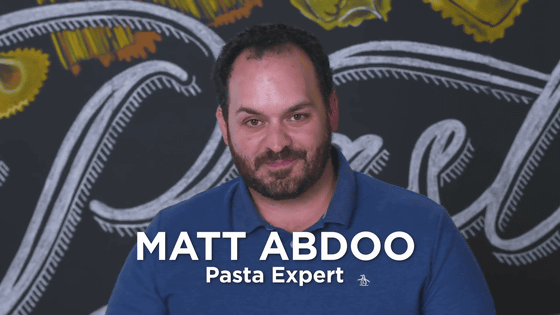
The first problem is short dried pasta.
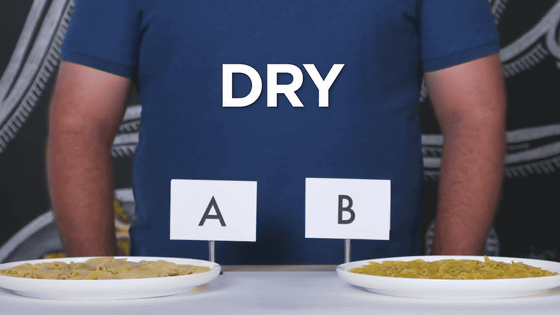
“The ingredients for dried pasta are as simple as flour and water. Mix the ingredients and use a pasta molding machine or flatten and cut into pasta shapes. Then dry It makes dry pasta. ''
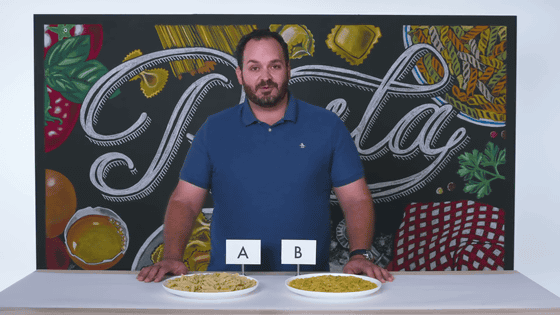
“The key to dry pasta is

First, check the appearance of pasta A and B.
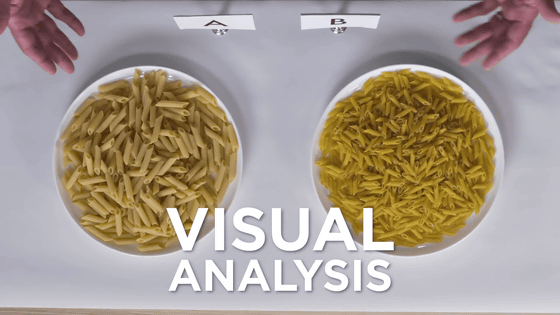
Abdoo explained the points to be observed about dried pasta. “The key to buying pasta is 'color'. The general term for dry pasta is to buy 'bright yellow one'. It is not very good as a raw material for dark-colored dry pasta. I use flour. '
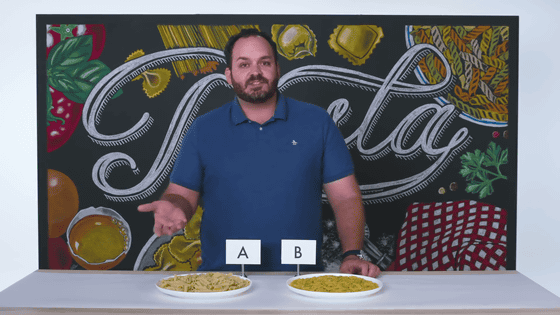
“Comparing the dry pasta of A and B, A has a darker color.”

“The next point to see after color is“ texture ”such as touch.”
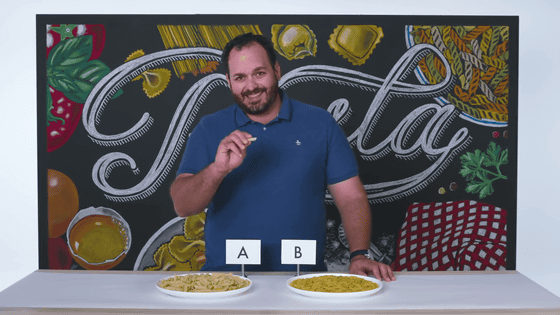
“High-grade dry pasta may use bronze where the pasta of the molding machine passes. The dry pasta produced by the bronze molding machine has a good texture, has more grooves and folds, and the sauce tends to get tangled. On the other hand, poor quality pasta uses a Teflon molding machine for mass production that has been processed so that it does not stick. ''
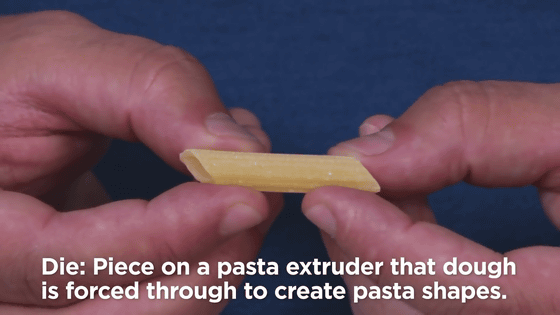
The appearance of B's dry pasta is unpopular, with the comment, 'When you take B's dry pasta, it is not smooth and smooth. This is a typical feature of mass-produced products made with Teflon molding machines.'
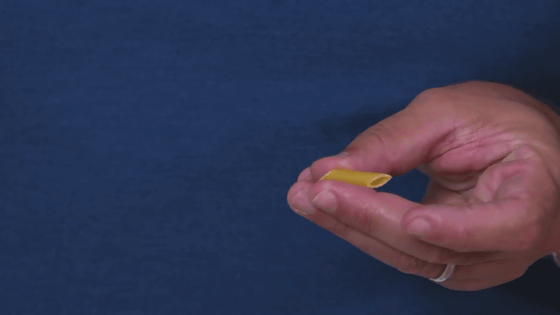
Next is to see the taste. Abdoo himself strokes A and B dry pasta.
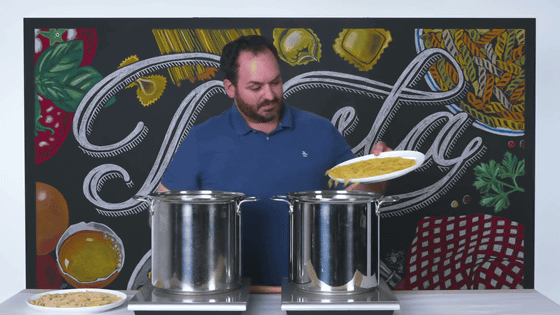
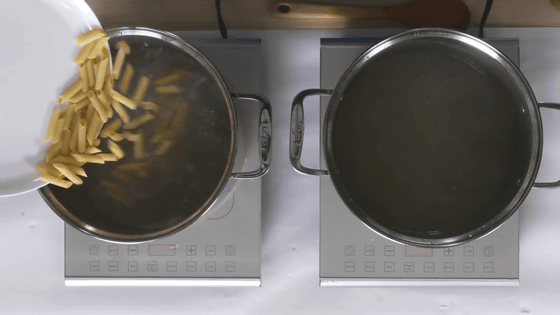
Real food.
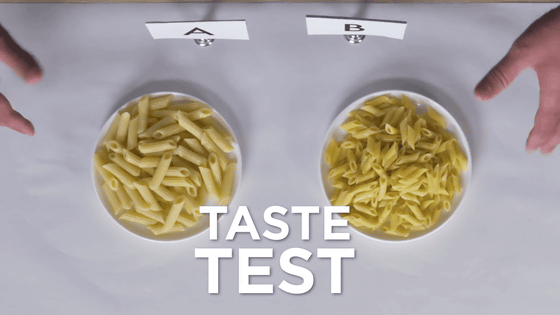
First check from A.
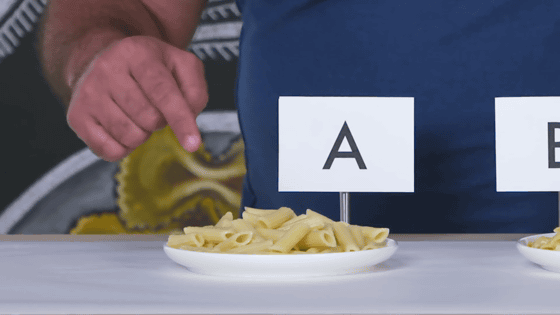
You can see that the boiled A has elasticity because it quickly returns to its original shape even if it is crushed by hand.
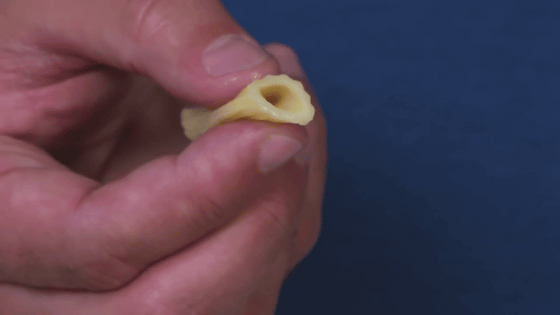
If the 'good pasta, even after the Yudeaga'
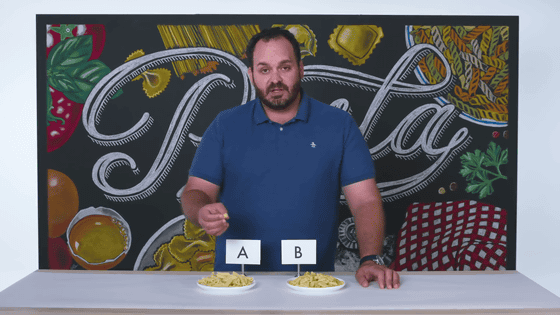
You can see a white line on the cross section of A pasta. According to Mr. Abdu, the white line shows that the quality is high.
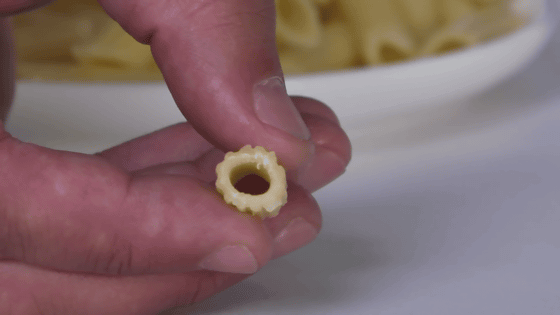
Next is B's pasta. “If you look at B, the pasta are sticking together. This is typical of poor quality pasta.”
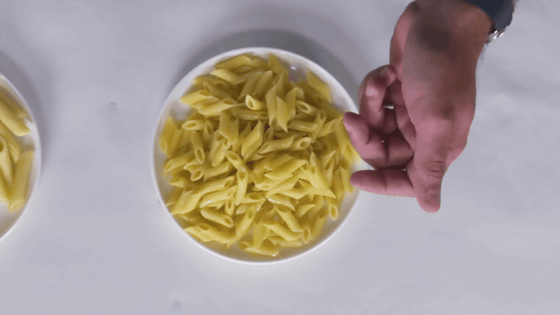
Once crushed B does not return to its original shape.
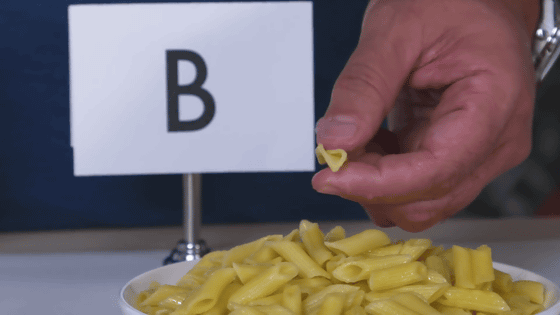
Abdoo packed B. However, I didn't mention the taste of B, as I thought it was unnecessary to talk.
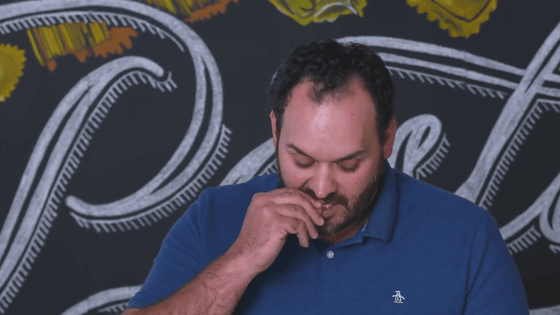
Ask Mr. Abdu to choose which one of A and B dry pasta is a high-end. Abdoo decided that A's dry pasta was high quality.

Looking at the results, A is $ 9.09 per pound (approximately 216 yen per 100g), and B is $ 0.67 per pound (approximately 16 yen per 100g). B was super cheap pasta.
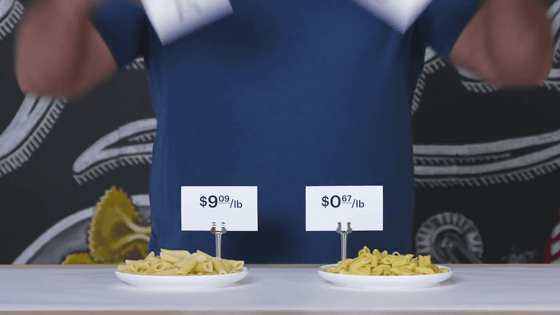
“A is a little more expensive, but the taste is very good and I recommend it for special events. I can guarantee that A will love even my 2-year-old son.”

The second question is raw pasta.

“The first thing you need to know about raw pasta is that it is completely different from dry pasta. Raw pasta has a different taste and texture and is a delicate food. Eggs are used in the past, and raw pasta with good quality eggs will be better in quality. ''

First, from the appearance. “There is no drying process in raw pasta, so it will oxidize naturally. Oxidation will produce black spots on the surface of raw pasta. Eating raw pasta with black spots will not cause illness. It ’s not bad, but it ’s been a few days since the raw pasta was made. ”
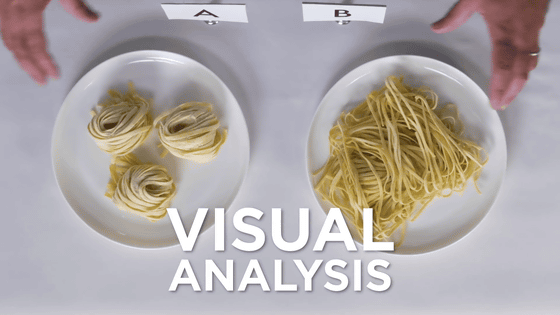
According to Mr. Abdu, B is slightly yellower than A. B has the appearance of unbundling things, and there is no direct relationship to the price just because it was bundled separately, but the price is not good because the customer is not willing to buy it. May be cheaper. '
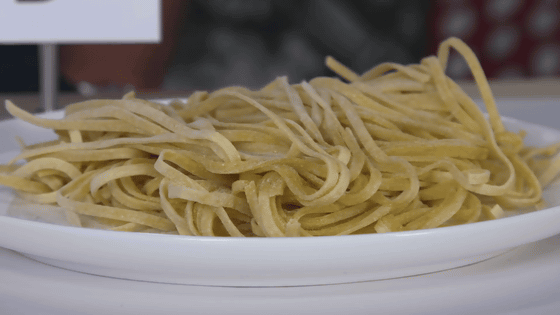
On the other hand, A shows that the flour powder is sprinkled on it, and that the hand is on. Mr. Abdou commented, “In the sixth sense, A is expensive.”
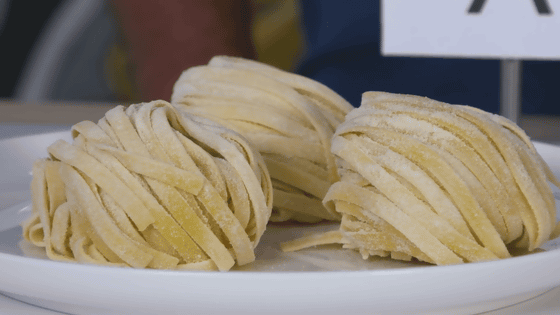
Cook the fresh pasta from A and B ...
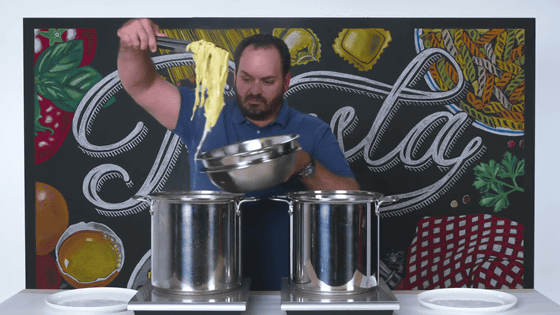
To the actual meal. The point to note when boiling raw pasta is to reduce the boil time by half or less compared to dry pasta of the same shape.
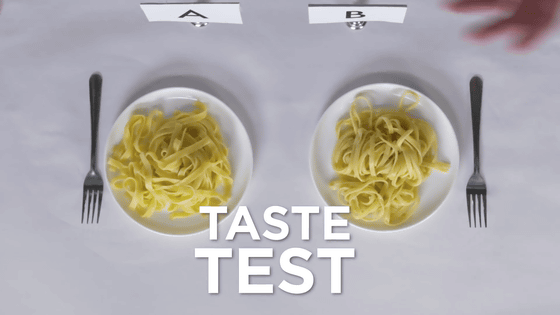
A after boiling has a yellow color compared to B. Abdoo says, “The yellower one may be using a better quality egg.”
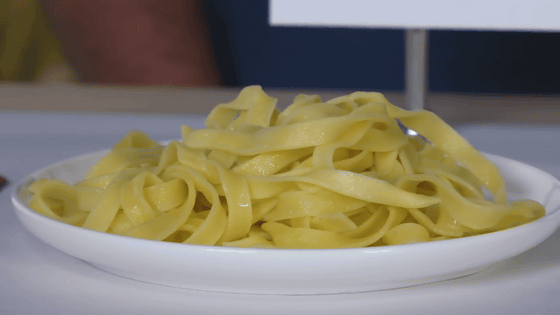
A was elastic after boiled. Pasta that does not stick or stick over time after boiled is high quality.
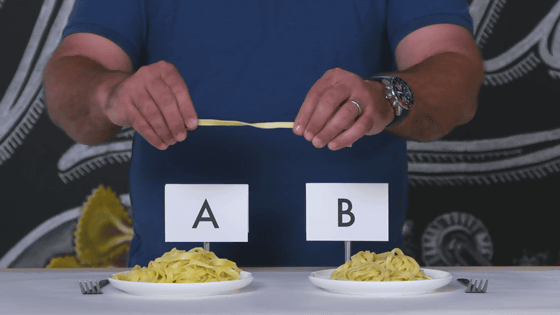
Abdoo, who ate A, acclaimed, “It has a wonderful texture, no stickiness, and the taste of adding a little egg to wheat”.

On the other hand, Abdoo, who ate B, commented, “It has a good flavor and texture and is a little stronger than A. A and B are also good raw pasta, and it is hard to attach it.” B is also quite like high quality raw pasta.
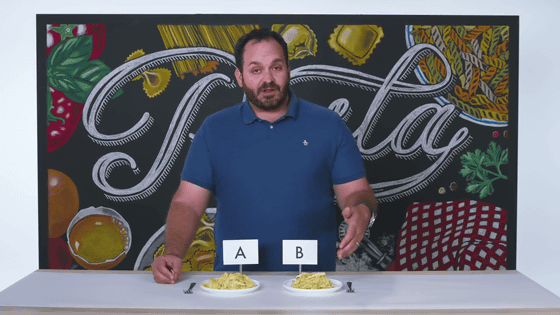
Abdoo chose A.
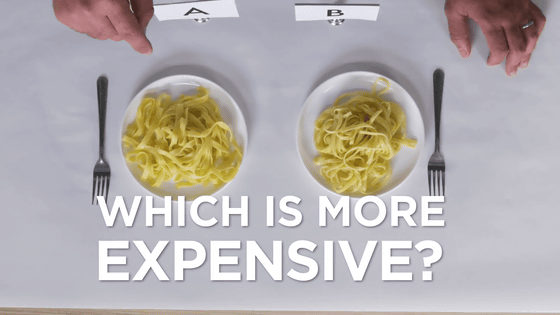
As a result, A was $ 9.9 per pound (approximately 236 yen per 100 g), and B was $ 3.99 per pound (approximately 95 yen per 100 g).
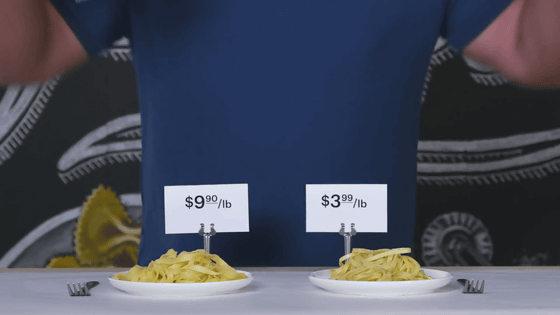
Abdoo, who was able to hit a large amount of pasta, made a big guts pose.

“A looks great, so it ’s recommended if you take it to someone else ’s house. But if you just eat it, I recommend B,” he said.
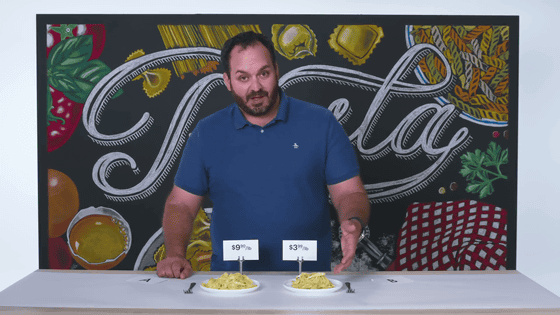
The third question is pasta with stuffing. Pasta wrapped in ingredients.
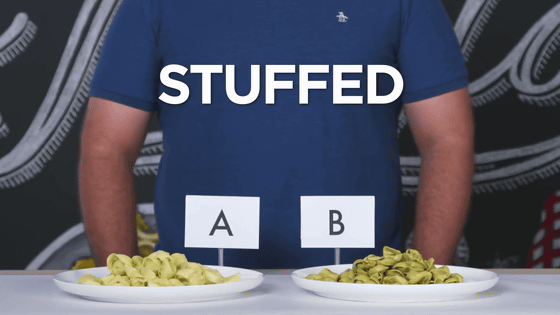
“The stuffed pasta is an evolution of raw pasta. So, the point of determining the superiority or inferiority of raw pasta can be applied to the stuffed pasta as it is. The stuffed pasta that contains ingredients basically uses eggs. ''
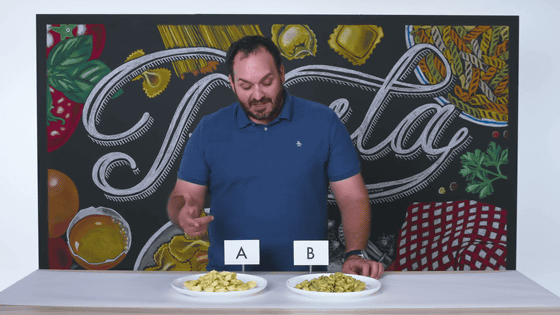
First, check the appearance. According to Abdoo, judging from the shape, the question this time is
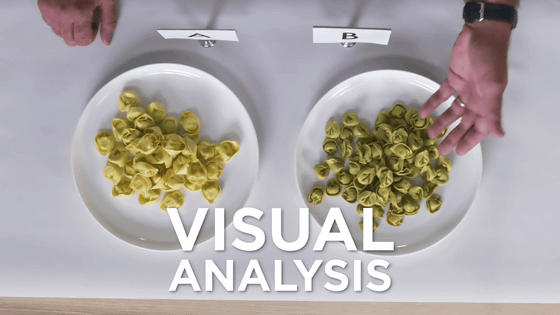
B is clearly green, and it is obvious that green vegetables are used as the raw material. Abdoo predicted that he was using spinach.
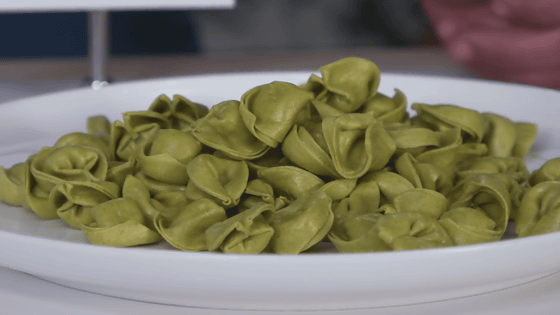
On the other hand, A is a slightly larger size Tortellini. It seems that it looks like it uses abundant quality eggs.
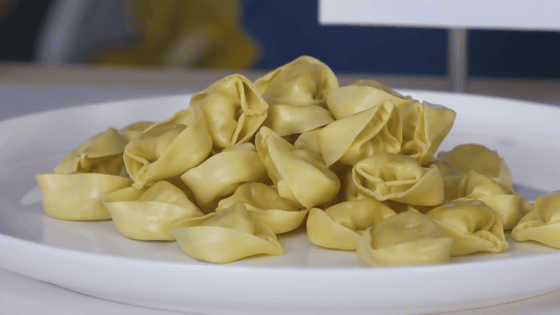
“I don't know just how it looks,” Abdoo brought his face closer and checked the scent. A, like its appearance, has a fresh scent of high-quality wheat and eggs, and has no off-flavors such as
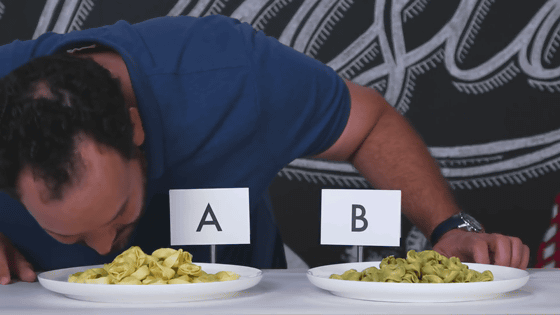
Abdoo, who also checked the scent of B, briefly said, “It ’s just as good.”
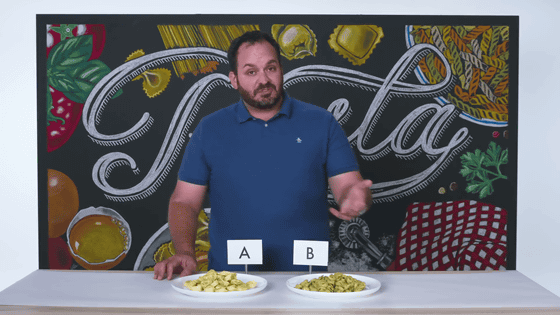
There was no sign that the price of A and B could be seen by appearance or scent. That ’s why it ’s boiled.
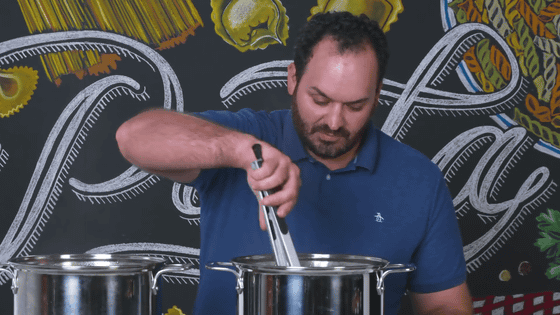
Boiled A and B look like this. Neither A nor B were torn just because they were boiled, and the ingredients did not leak.
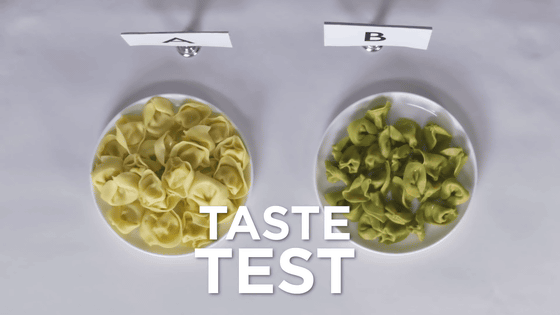
A is not sticky to the touch and has a good texture.

B, on the other hand, has a good appearance with no visual variation.
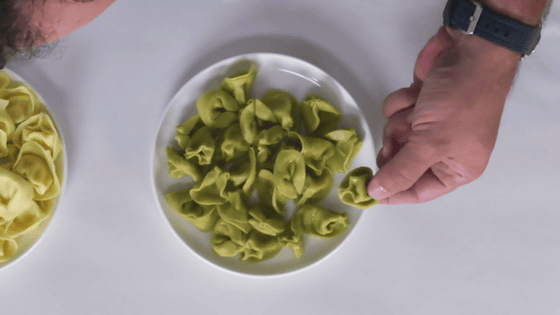
From the appearance of boiled A and B, Abdoo decided that “A is made by hand and B looks like a mass-produced product”.

Next, let ’s look at the taste. Abdoo ate a bit from B.

“The flavor of spinach kneaded into the dough itself is slightly felt. The inside contains soft brown cheese, but in terms of color, this cheese seems cheap.”
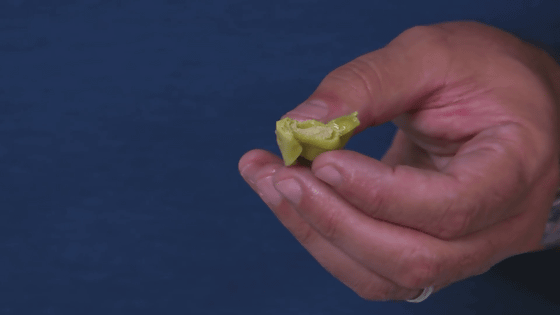
Next is A. A said, “The pasta itself tastes great, but the ingredients are not good.”

It was A that Abdoo decided that it was expensive.

Looking at the results, A was $ 13.98 per pound (approximately 333 yen per 100 g), and B was $ 7.66 per pound (approximately 183 yen per 100 g). Mr. Abdoo shouted, “Oh my ger” and commented, “A will cost $ 14 per pound!”
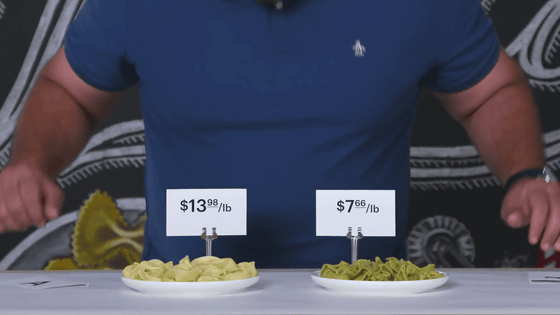
“Because the ingredients are in the contents, the stuffed pasta is a little expensive. The problem this time was that the ingredients in A and B seemed to have almost the same taste. I will buy it. '

The fourth question is seasoned pasta. Among the seasoned pasta, the dry type was presented.
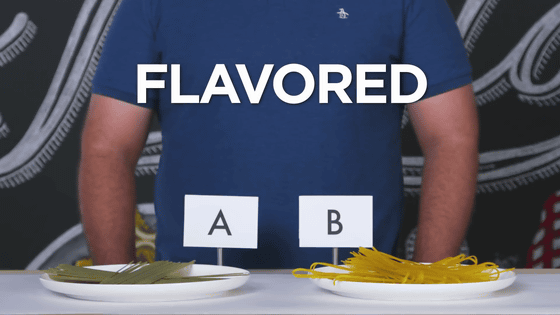
That's why I checked the appearance at once. A is clearly green. In green pasta, spinach is usually used.
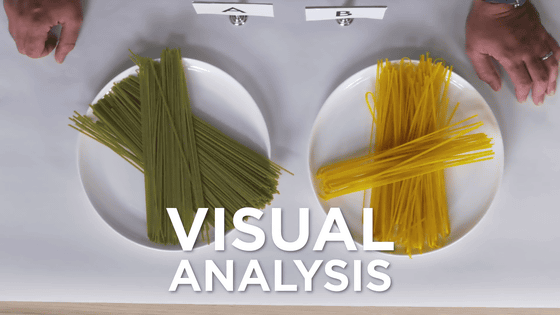
One B is superb yellow. There are no spots due to oxidation. Abdoo predicted that “B is probably a
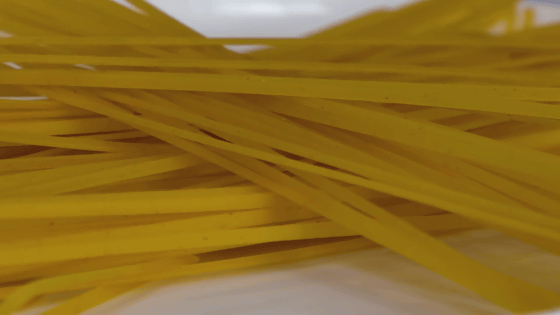
Next is cooking ...
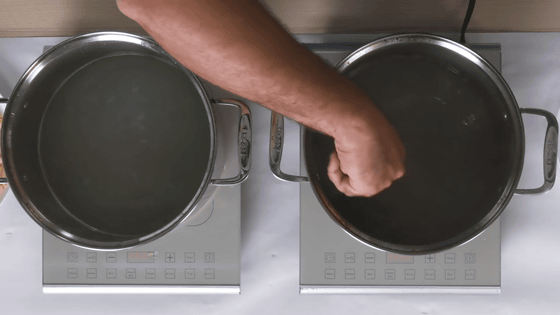
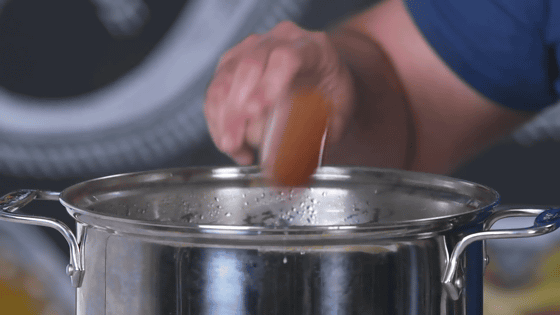
To the actual meal time. Mr. Abdu said at a glance, “Both look pretty.”

A seems to be darker in green pasta. Because the green is darker, spinach is often used as a raw material, and there is a possibility that the price is high.
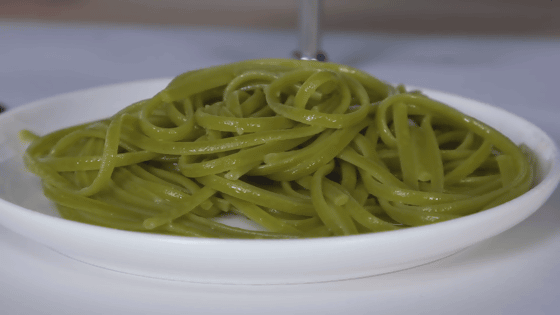
A has good elasticity.

Abdoo, who ate A, said, “I don't taste much vegetables.” However, the taste of pasta itself seems to be good.
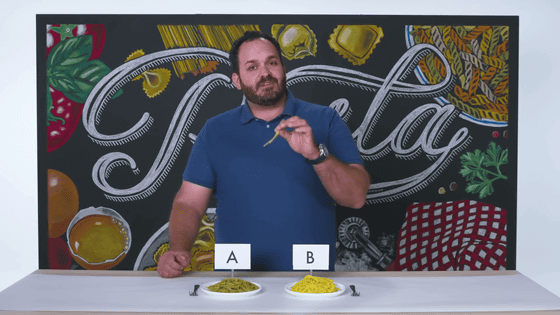
On the other hand, B says that it has a mellow fragrance like a lemon before it comes close to the face.
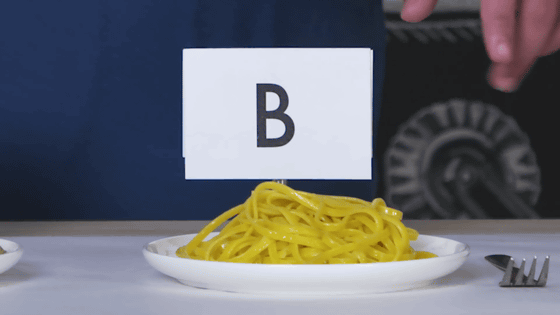
Abdoo, who ate a bit of B's pasta, declared 'absolutely saffron.' The taste of saffron is quite strong.
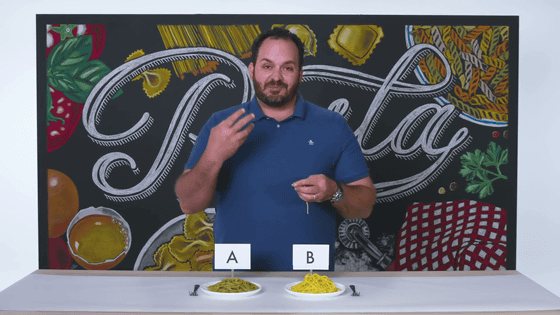
Abdoo chose B, which used plenty of high-quality food saffron.

As a result, A is $ 4.65 per pound (approximately 111 yen per 100 g), and B is $ 18 per pound (approximately 429 yen per 100 g). B was a super high class pasta.

“If high-grade materials are used, the price of the pasta itself will jump,” he said.

The last problem is gluten-free pasta.
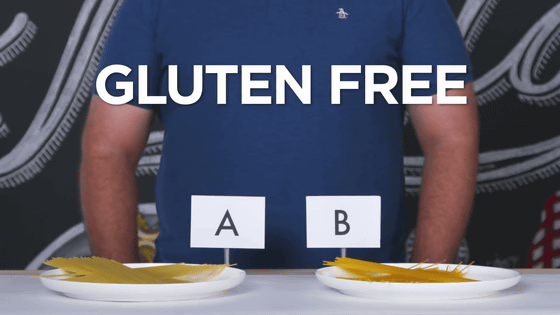
Abdoo started with a gluten commentary. “Gluten-free pasta is a pasta that does not use the protein“
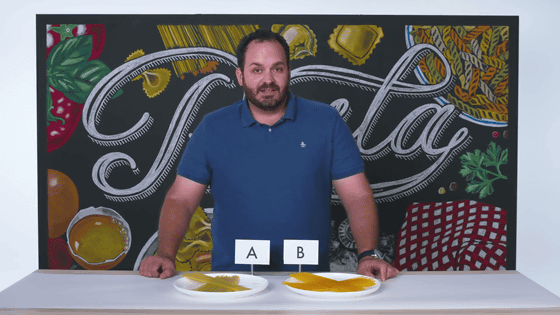
Next is the visual comparison.
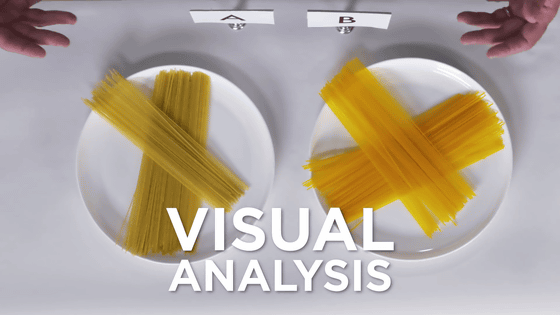
B is orange.
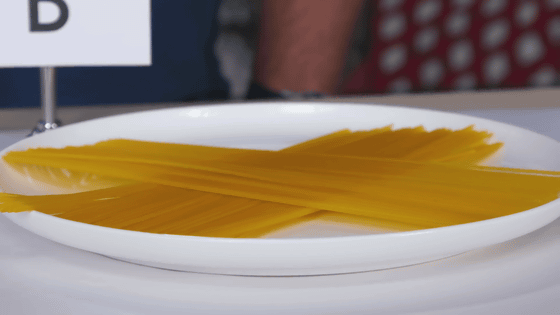
On the other hand, A is a color that can be recognized as rice or brown rice.
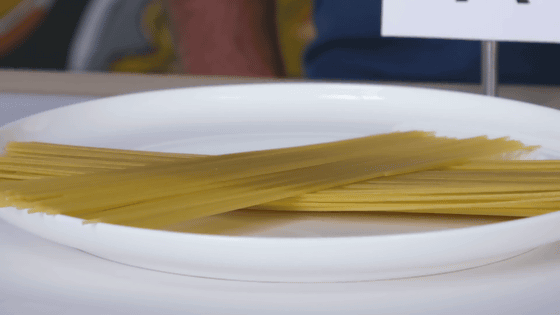
Boil yourself Abdoo ...
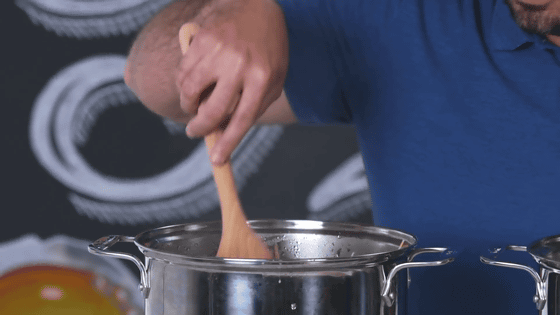
Actual meal.
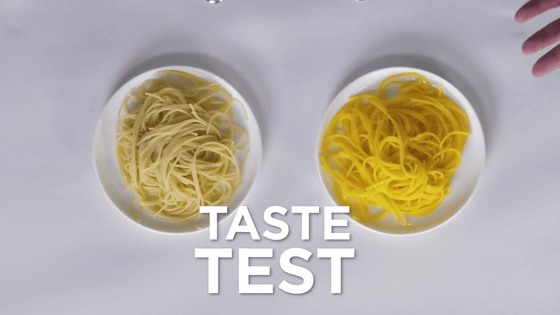
Looking at the boiled A, the pasta itself has already broken. Gluten-free pasta tends to be relatively brittle because gluten has the property of imparting elasticity to the dough. However, the price of pasta that can be torn off just by boiling is quite low.
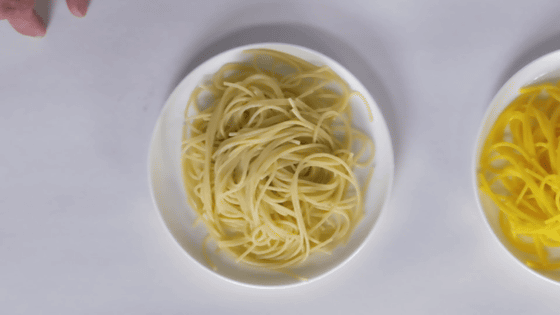
Abdoo, who ate A, said, “It feels like a film is formed on the tongue, and the mouth dries.” A is quite unpopular.

Next to B. Abdoo, who saw the boiled B, described it as “cone-like shades”.
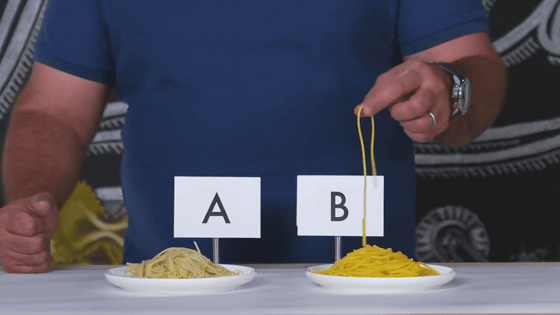
Abdoo, who ate B, said, “B has a chewy texture and it has been a while since it boiled, but the texture of Ardente remains. It tastes different from flour pasta, but it is quite close It is a taste. '
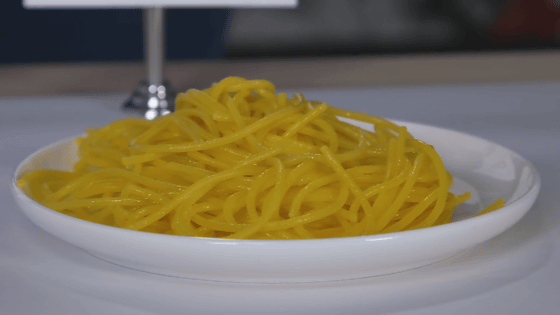
Of course, B. decided that Abdoo was expensive.
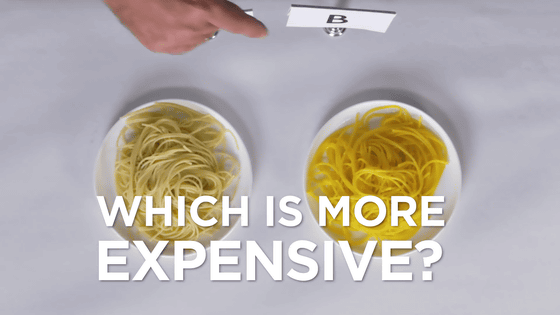
Looking at the results, A was $ 3.98 per pound (approximately 95 yen per 100g), and B was $ 14.53 per pound (approximately 346 yen per 100g).
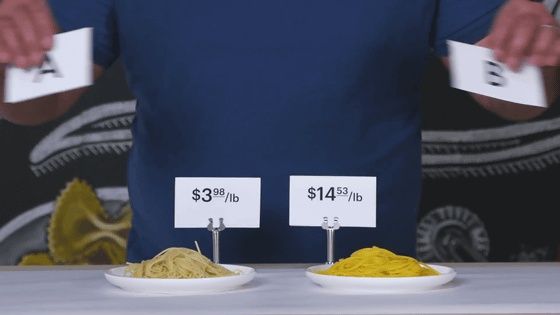
“If you can't eat gluten or don't want to eat it, I recommend gluten-free pasta. B's gluten-free pasta is expensive to eat every day,” he said.
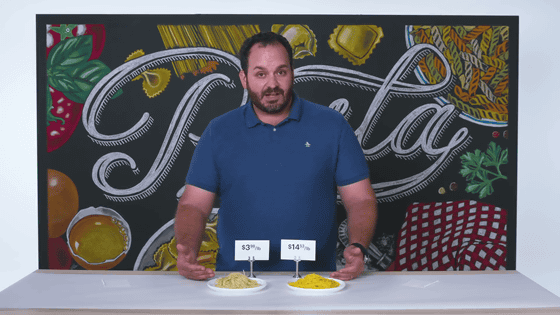
In summary, Abdoo said, “The most important thing is that there is something of good quality, even if it is not so expensive. Search for a pasta that you want to eat on your budget. Please comment '.
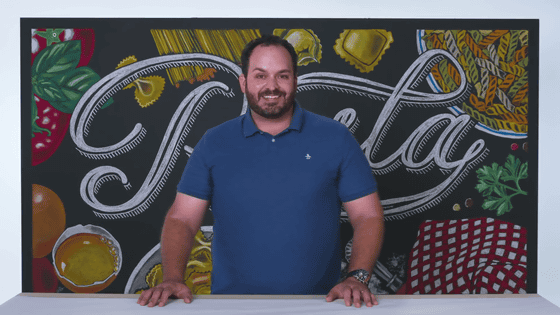
Related Posts:







